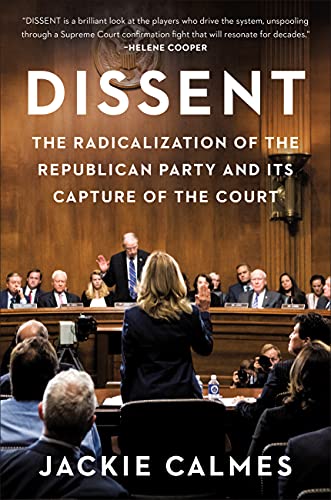The Nature of Insurance Adjusting
Michael
Sean Quinn, Ph.D, J.D., Etc.
Sean Quinn, Ph.D, J.D., Etc.
2630
Exposition Blvd #115
Exposition Blvd #115
Austin,
Texas 78703
Texas 78703
(o)
512-296-2594
512-296-2594
(c)
512-656-0503
512-656-0503
A “Child’s” Guide to the Process & Its Elements*
This formulation is in terms of “steps.” They are often like this chronologically, but not always. Not every step is involved in every claim. The steps often overlap or arise one time, and then again sometimes they are mechanical–first one and then the other. The “end steps” are the most important for this discussion.
Fundamentally, insurance adjusters are or are like detectives. Most of their work is empirical investigation of one sort or another. On the other hand, some of it involves legal investigations. Are they divorced? Who has title? Is that its truck” Who is the parent of that child? (Which may be both empirical and legal.) And so forth.
Usually, if there are issues as to coverage, adjusters become investigators as to applicable meaning of language, usually regarding the applicable contract(s) of insurance, but may be many other documents as well.
Now for some steps. Remember: these are steps involving reasoning and logic and often of chronology, as well.
Insurance adjusting is, first, the process of determining whether someone (or something) is an insured.
A next step is to try and determine whether the insured has sustained a loss of some sort.
A third step is to try and see if the loss is of a sort that is covered by the policy.
This may involve an investigation of the language of the policy. That may involve reading and/or studying various kinds of guide books insurers usually keep around; it may involve consultation, usually with other adjusters, sometimes with underwriters, and occasionally with professional coverage attorneys, whether from the company’s legal department or from outside counsel. (The truth is that adjusters function a bit like coverage lawyers sometimes, and particularly in large cases, they may be themselves lawyers.) This step may arise over and over again.
A fourth step is to try and determine what the loss is worth, i.e., what is the insurer obligated to pay. This often involves a close empirical analysis of the loss itself and an economic/financial investigation and analysis of what might be called the price of the loss.
A fifth step is to ask again questions about coverage, especially not only given the nature of the loss but also the monetary value of the loss. The whole loss or only a percentage may be covered. In addition, if a loss involves component parts, some of them may be covered and others not. For example, a Ralph Lauren store may have coverage for water damage caused by a storm, but not have coverage for business interruption the storm caused.
A sixth step is to discuss the size and nature of the loss with the (or an) insured, usually the policyholder but maybe others as well, named insureds or loss payees. This discussion may lead to a discussion of what the adjuster takes the worth of the loss to be, and then the extent of monetary coverage, e.g., policy limits, less than policy limits, and so forth.
A seventh step is negotiate the price of the resolution. It should involve price only. Price should not depend on the nature of the insured, e.g., weaknesses, upon the nature of the insurer, e.g., strengths, or the fact that the insurer can threaten the insured with, for example, penury from denial.
It does not matter whether the insured, say, Ralph Lauren [and his company], is an arrogant, egotistical, self-worshiping, worship-demanding, passionately self- aggrandizing, deeply devoted narcissistic sack-of-shit, or whether some other insured is a gangster. What matters is whether the insured has sustained a loss. (At the same time, the moral character of an insured might raise issues as to truthfulness, and that is a fair inquiry. At the same time, the insured’s history is not a dis-positive factor.)
Either before or after the seventh step (so let’s call it, the eighth step), the insurer is to announce its decision as to whether there is coverage or denial or a mixture of both. Often the adjuster determines this and announces it, often by letter. Notice what is being said here.
The process of determining coverage and setting coverage decisions forth is part of the adjustment process and not distinct. It is not another, different activity generated by adjusting; it is part of adjusting.
There may again be negotiations.
Several more important points.
Each of the steps is regulated by normative principles. Some may be peculiar to only some of the steps; others may apply to all of them. Some of them result from the law; some are from internal policies of different insurer; and some result from an assortment of other factors: reason, logic, common moral values, or accepted professional norms, accepted social norms, and so forth.
The process of adjustment may continue into a litigation process. In other words, adjusters may continue adjusting claims after Complaints have been filed. In addition, parts of the litigation process may be parts of the adjustment process.
As a conceptual matter all adjustment must be viewed as part of a settlement practice. The term “settlement” in the context of litigation pertains to the resolution of a dispute by negotiation and/or agreement, without proceeding to final judgment, unless as part of the settlement agreement. The word can also mean something like this in the context in the context of transaction negotiations.
The meaning of the term “settlement” in the context of insurance adjustment covers virtually the whole process. This is because the entire process is working toward a resolution of a contract and money matter. There is nothing that is part of the process that is not part of the settlement process. The mere fact that a claim is not likely to settle does not make the process any less a process of trying to settle and therefore a settlement process.
These two separate meanings should be distinguished at all times and never confused, except when they are both being satisfied at once, a rarity since there is a good deal more “power v. weakness” characteristics in the litigation settlement process than is permitted in adjustment. Litigation is not as just as a correct adjustment process.
*Raise your glass high to begging forgiveness from both Britten and Bernstein.





Recent Comments